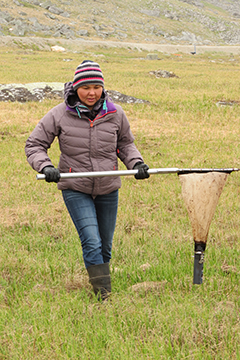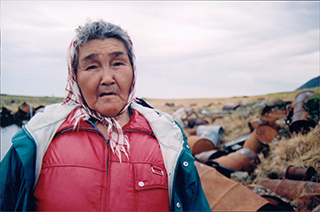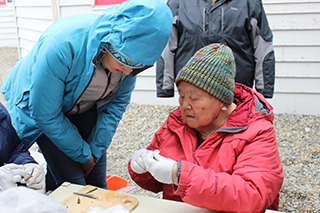Partnerships for Environmental Public Health (PEPH)
Study Location: Northeast Cape of Sivuqaq, AK
Academic Partners:
University of Arizona
Frank A. von Hippel, Ph.D.
Northern Arizona University
Charles L. Buck, Ph.D.
Middlebury College
Samuel Byrne, Ph.D.
University at Albany
David O. Carpenter, M.D.
Emory University
Amina Salamova, Ph.D.
Community Partners:
Alaska Community Action on Toxics (ACAT)
Pamela K. Miller
Viola (Vi) Waghiyi
Samarys Seguinot-Medina, Ph.D.
Project Description

The Northeast Cape of Sivuqaq, also known as St. Lawrence Island, in Alaska has a long legacy of hazardous waste from sites formerly used by the U.S. Department of Defense, known as formerly used defense (FUD) sites. Recent studies have found elevated levels of persistent organic pollutants, such as polychlorinated biphenyls (PCBs), organochlorine pesticides, and mercury, in soil, sediments, fish, and the blood serum of residents. The Indigenous communities of Sivuqaq are disproportionately affected by legacy contaminants from FUD sites. These contaminants impact their land, water, traditional food sources, health, and well-being.
This project will advance the scientific understanding of exposure pathways and long-term health consequences associated with exposure to legacy contaminants from FUD sites. Additionally, the project will inform interventions necessary to protect the health and well-being of Sivuqaq residents as they restore and re-establish their traditional community at Northeast Cape.

Partnership with a local community organization, Alaska Community Action on Toxics (ACAT), will facilitate community-based research that is informed by local and traditional knowledge, and empower decision-making and public health interventions. The partnership with ACAT will also help promote policy actions at the state, national, and international levels for the health and well-being of Indigenous communities.
Specific project aims are to:

- Build on prior research and continue collaboration with affected communities to investigate potential exposure pathways and biological impacts of persistent organic pollutants associated with FUD sites.
- Analyze levels of PCBs, organochlorine pesticides, and mercury in water, traditional foods, and air samples to assess potential exposure pathways.
- Characterize and quantify body burden of contaminants and links to health outcomes.
- Use research results and traditional knowledge to inform interventions necessary to protect the health of the Indigenous peoples on Sivuqaq and enable the re-establishment of their traditional community at Northeast Cape.
- Develop a community-based public health action plan and interventions to protect health.


